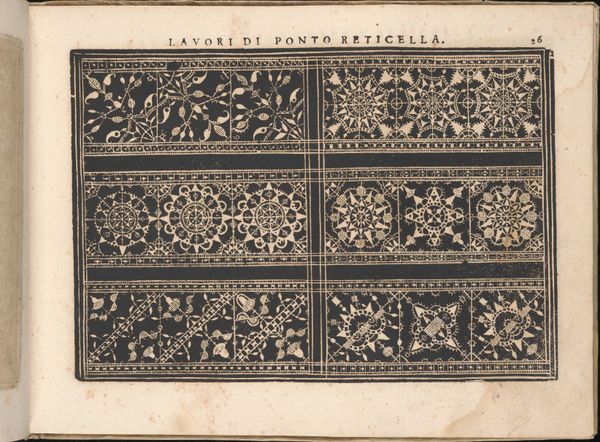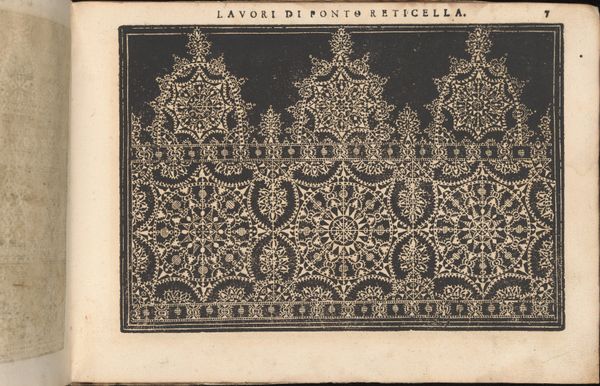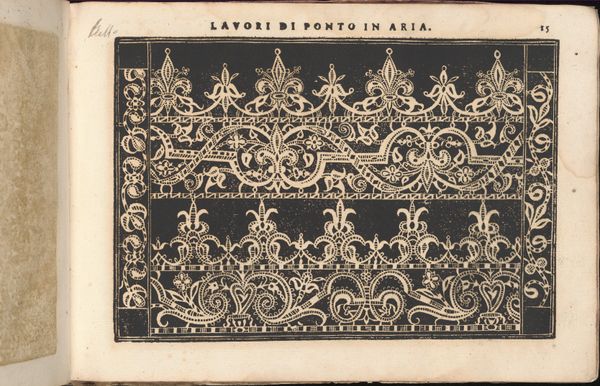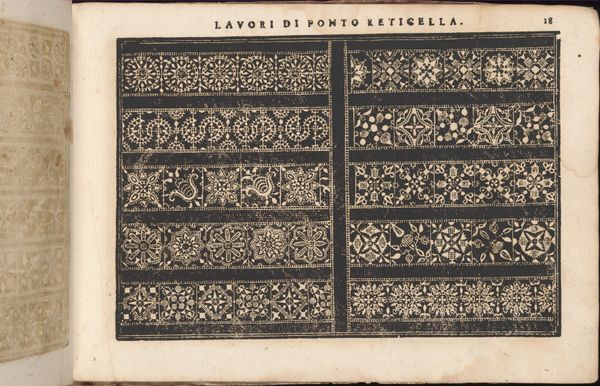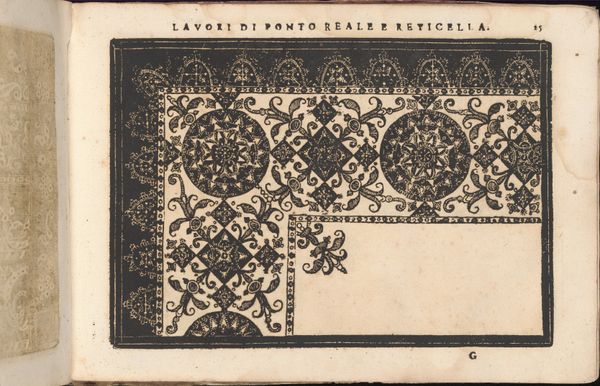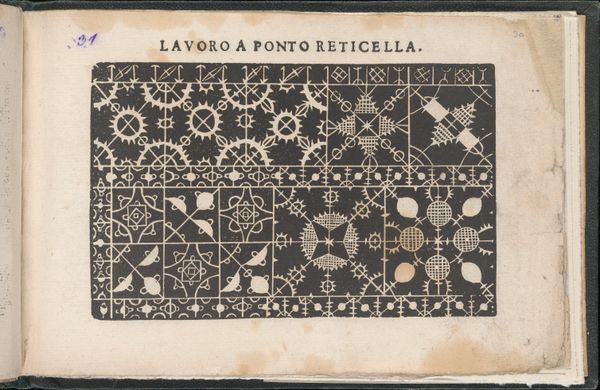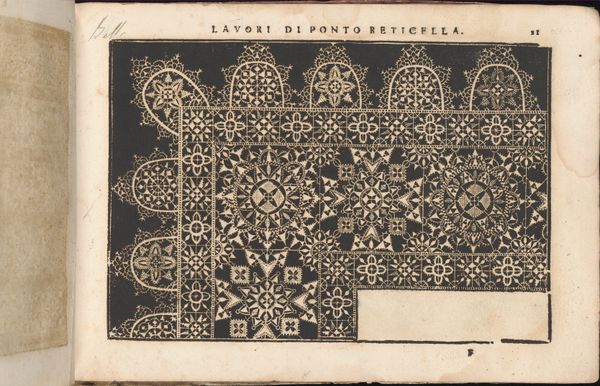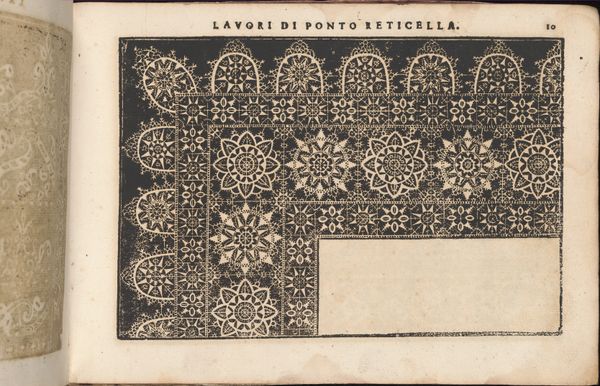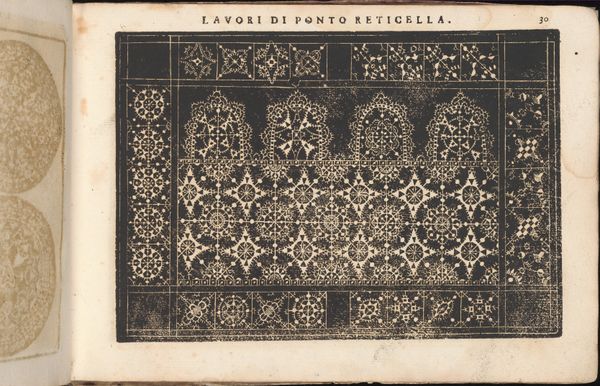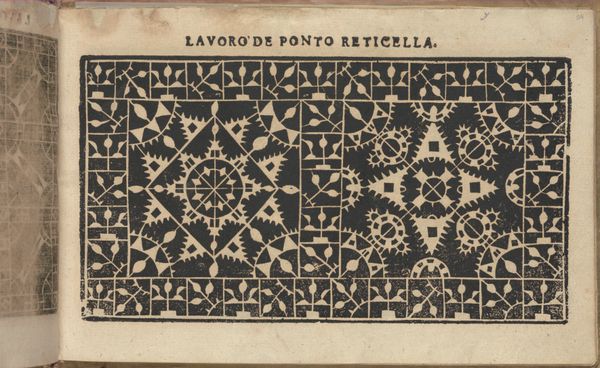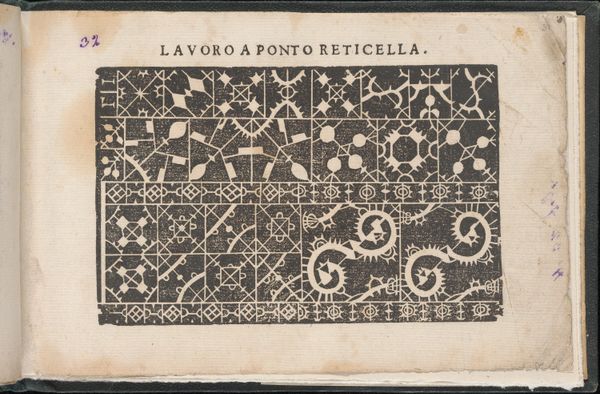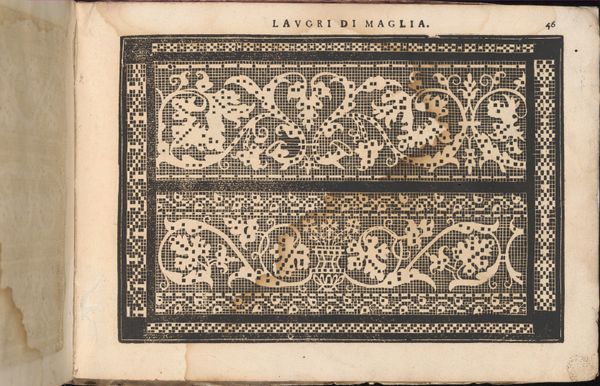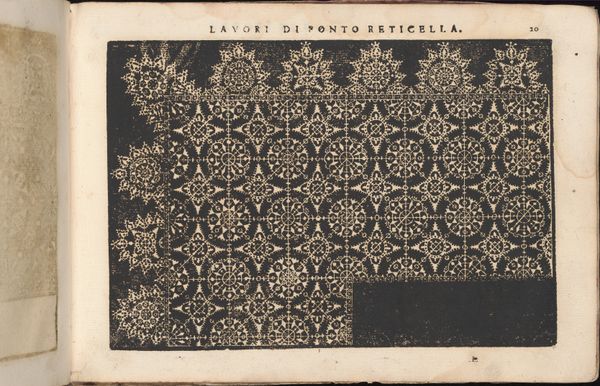
Teatro delle Nobili et Virtuose Donne..., page 34 (recto) 1616
0:00
0:00
drawing, print, intaglio, paper
#
drawing
#
toned paper
# print
#
intaglio
#
paper
#
11_renaissance
#
geometric
#
line
#
decorative-art
#
brown colour palette
Dimensions: Overall: 7 1/2 x 10 7/16 in. (19 x 26.5 cm)
Copyright: Public Domain
Editor: Here we have Isabella Catanea Parasole’s “Teatro delle Nobili et Virtuose Donne… page 34 (recto)” from 1616, made using intaglio on paper. It's incredible to think about how these repeating patterns were meticulously etched. What does this type of design signify within its historical moment? Curator: This piece isn't simply a decorative pattern; it's a potent representation of the burgeoning role of women in early modern European society. Consider the title, "Teatro delle Nobili et Virtuose Donne," translating to "Theater of Noble and Virtuous Women." What does that phrase suggest about the intended audience and the artwork's purpose? Editor: Well, it seems to be directed toward women, suggesting that they should be noble and virtuous. Curator: Precisely. It acted as a pattern book for lace making, a skill highly valued in noblewomen, but also one which afforded the potential for women, even outside the nobility, to generate income. Think of it as an early form of female empowerment, veiled within the domestic sphere. How do you think these patterns could be understood as a kind of visual language or symbol of social aspiration? Editor: I suppose the ability to create and own these intricate patterns would signify wealth and status, indicating access to specialized knowledge and materials. It makes me wonder about who actually designed and produced these prints. Curator: Exactly! While intended for women's use, understanding who created these objects – whether Parasole herself was solely responsible or whether workshop assistants were involved – reveals a more nuanced picture of artistic production and the socio-economic conditions that enabled it. Editor: This has definitely changed my perspective; I now see it as much more than a pattern, and more of an insight into the social context for women during the Renaissance. Curator: And that’s the point; art always reflects and shapes the world around it. Thinking critically about its place helps us appreciate its full value.
Comments
No comments
Be the first to comment and join the conversation on the ultimate creative platform.
